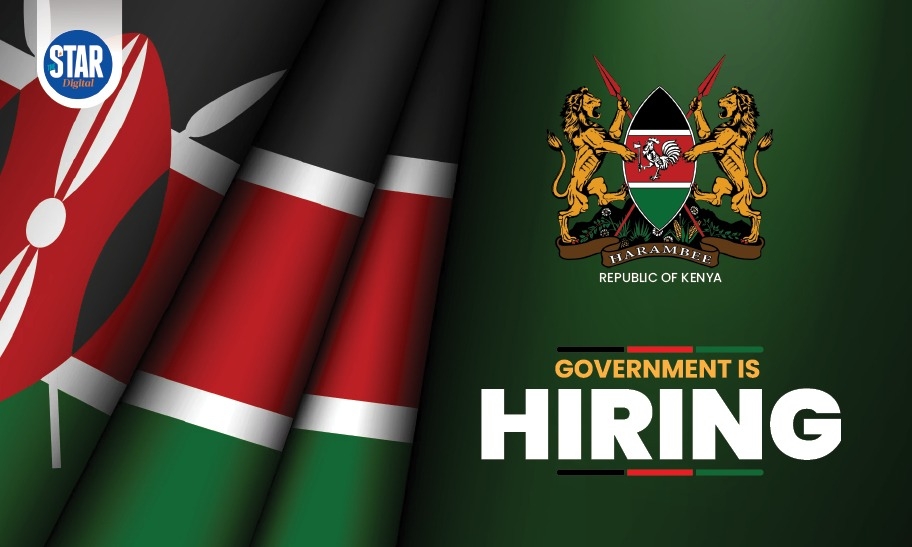The National Environment Management Authority has announced plans to gazette Kiu wetland in Makueni county as the venue for National Tree Growing Day.
Nema said wetlands have been identified as having high potential for ecosystem restoration.
This includes tree growing and support for livelihoods as they ensure the availability of water.
“In line with the National Wetlands Restoration Strategy, Nema, in collaboration with the Makueni County Government, has identified five wetlands that are earmarked for gazettement, including Kiu Wetland, the venue for the National Tree Growing Day,” the authority said in a statement.
The national tree planting event will be presided over by President William Ruto on November 13.
Nema said it has also mobilised stakeholders countrywide to participate in the tree-growing exercise, which seeks to grow 100 million seedlings.
On Tuesday, Environment CS Soipan Tuya said the national tree-growing exercise will be held concurrently with county tree-growing exercises across the 47 counties.
These exercises will be presided over by Cabinet Secretaries.
“This strategy identified wetlands as having very high potential for ecosystem restoration, including tree growing and support for livelihoods, because of the all-year availability of water," she said.
"Each of my cabinet colleagues has been assigned at least two counties to oversee. The CSs will be hosted by respective county governors and supported by county commissioners, principal secretaries, county environment committees among other officials."
Kenya Forestry Research Institute has revealed over 25 tree species suited for Kiu catchment.
Kefri acting CEO Dr. Jane Njuguna said the tree species include Acacia nilotica, Acacia eliator, Acacia gerandii, Acacia melifera, and Acacia polyacantha.
Others are Acacia Senegal, Acacia seyal, Acacia tortilis, Acacia xanthophlea, Balanites aegyptica, Bambusa vulgaris, (Lowland bamboo), Combretum schumanii, Cordia sinesis, Erethyrina burtii,
Ficus sycamorus (Fig tree), Melia azadirach, Moringa stenopatala, and Azadirachta indica (Mwarumbaini).
Osyris lanceolata, Oxytenanthera abyssinica (lowland bamboo), Phoenix spp (Palms), Sclerocarrya birrea, Tamarindus indica, Terminalia prunoides, Vitex payos, Ximenia Americana are other tree species suited for the area.
Tuya said the tree growing event will continue beyond Monday, with activities cascaded to Subcounties and Sublocations.
They will be coordinated by the National Government Administration Officers and Subcounty Environment Committees.
“As a Ministry, we are determined to get our Country out of the period cycle climate extremes by implementing the ambitious Landscapes and Ecosystems Strategy, which is anchored on the 15 Billion National Tree Growing Programme,” she said.
The CS said there is need to grow at least 1.5 billion trees each year for the country to meet the 15 billion target in 10 years.
She said the ministry targets to grow 500 million trees during the short rains season and 1 billion trees during the long rains period.
“As I have said repeatedly before, Growing 15 billion seedlings looks huge on paper, but broken down, it simply means, that all the 50 million Kenyans need to grow 30 seedlings each year in 10 years and we will comfortably meet our target," Tuya said.
"It is this straightforward. In this regard, we have set a target of growing 100 million Seedlings on the 13th November 2023."
Nema said human activities have contributed to the alarming rate at which wetlands were disappearing.
It cited population pressure, land subdivision and fragmentation, over-utilisation of water as well as land-use changes as some of the threats on the wetlands.
Other threats include poor waste management, hydropower development, climate change, sedimentation and siltation, invasive alien animal and plant species, as well as hyacinth.
Changes in hydrological conditions, sand harvesting, over-abstraction of water, and overgrazing are other challenges.
The threats could complicate issues for Kenya, which has per capita water availability of less than 600 cubic metres. This is below the global threshold of 1,000 cubic metres per capita.
Water and wetlands are inseparable and vital to life, human well-being, and the health of the planet.
Today, more freshwater is being used than nature can replenish.
Wetlands biomass is responsible for keeping rivers at a normal level as they hold water and release it to the river as needed.
An acre of wetland can store up to 1.5 million gallons of floodwater.
The impact of climate change is also likely to make matters worse if the continued destruction of wetlands is not curbed.
Some of the benefits of wetlands include floods control, soil erosion prevention, water discharge and recharge, water purification, and nutrient and toxic retention.
They also provide wildlife habitats and centres of biodiversity and help in the prevention of saline water intrusion.
Wetlands are also amongst the earth’s top carbon stores.
By conserving and restoring high-carbon wetlands, the country can reduce carbon emissions and increase its capacity to adapt to climate change, while improving biodiversity, water security, and human well-being.
Wetlands in Kenya occupy three to four per cent of Kenya's landmass.
Environment laws define wetlands as areas permanently or seasonally flooded by water where plants and animals have become seasonally adapted.
Wetlands are found in Lake Victoria, Lake Naivasha, Lake Baringo, Lake Turkana, Lake Bogoria, Lake Nakuru, and Lake Elementaita.
They are also found in swamps such as Yala, Kingwal, Nyando, Shompole, Lorian, Ondiri, and Saiwa.
Some wetlands are also found in Athi River, Ramisi River, Tana River, Nairobi River, and Ewaso Ngiro.
Others are found in Olkaria, Menengai, and Eburu areas.
Environmental Management and Coordination Act of 1999 (section 42) provides the legal frameworks for the governance, protection and conservation of wetlands.
Section 9 of the Act mandates Nema to undertake supervision and coordination on all matters relating to the environment.
The National Wetlands Conservation and Management Policy (2013) seeks to enhance and maintain functions and values derived from wetlands.
This is in order to maintain ecosystem goods and services, protect biological diversity and improve the livelihood of Kenyans.
It also promotes communication, education and public awareness among stakeholders.
This is in addition to establishing an effective and efficient institutional and legal framework for the integrated management and wise use of wetlands.
Nema with the help of stakeholders has developed wetlands management plans belonging to Lake Olbosat, Lake Jipe, Lake Chala, Tana Delta, Yala Swamp, Ondiri Swamp, and Lake Kenyatta in Lamu among others.









![[PHOTOS] How Suluhu’s swearing in went down](/_next/image?url=https%3A%2F%2Fcdn.radioafrica.digital%2Fimage%2F2025%2F11%2F9cbad8a5-9bff-410e-b157-a335c61d6d8d.jpg&w=3840&q=100)











